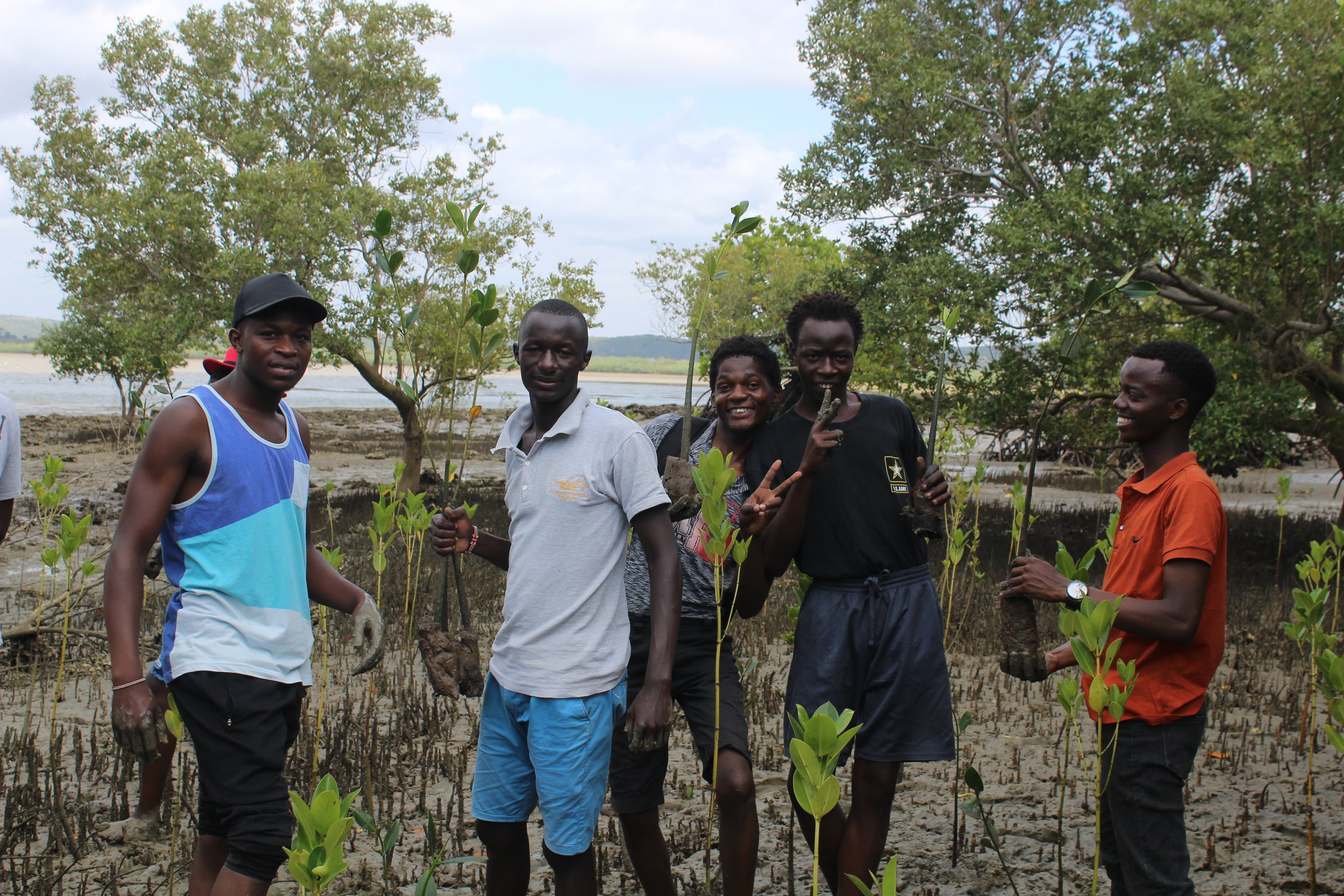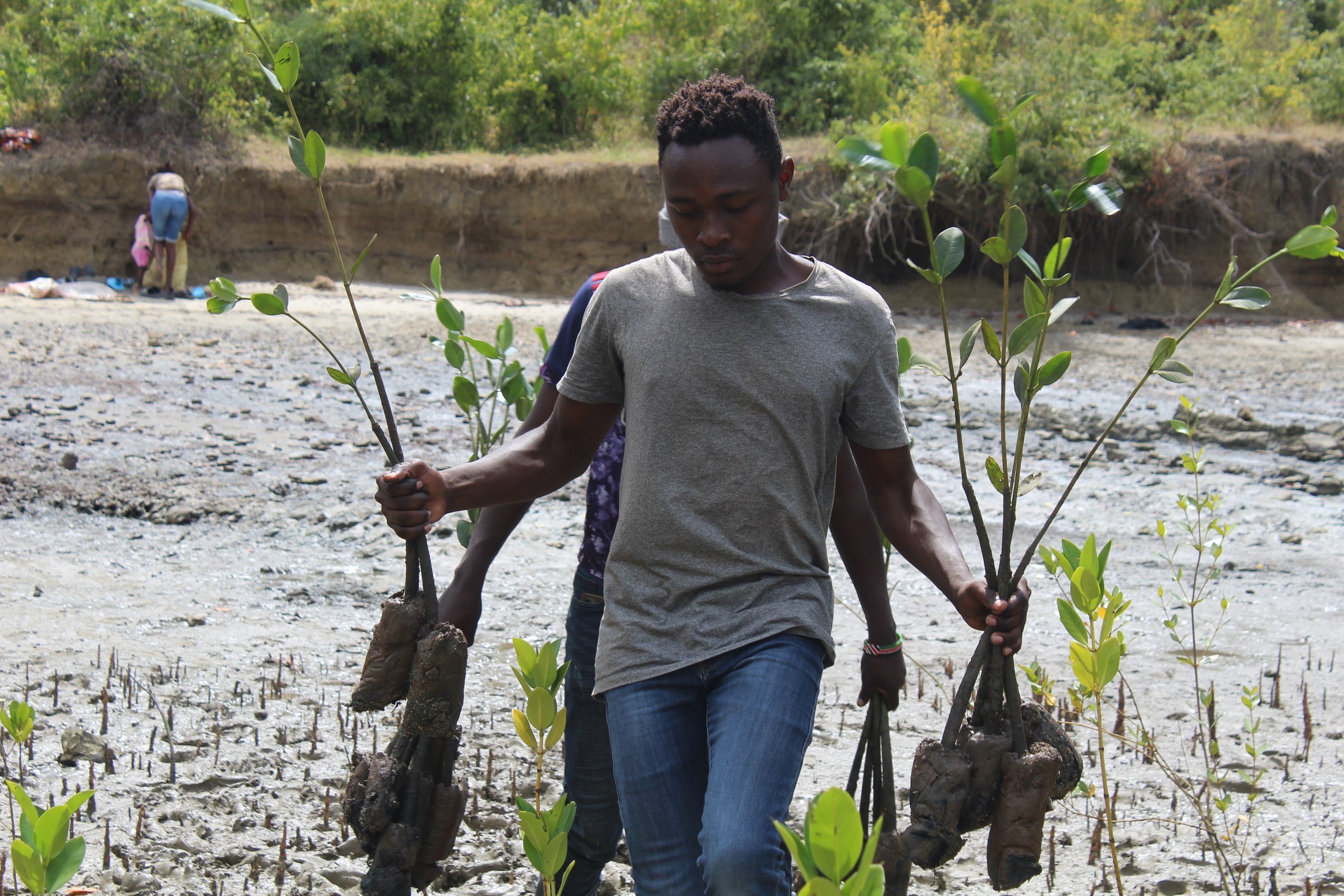Mangroves
Planting trees for biodiversity, carbon capture and community prosperity in Kilifi, Kenya
Along the coast of Kilifi county in Kenya, LEAF are planting trees to restore mangrove forests. The project involves planting over 100,000 mangrove seedlings, restoring 100 ha of forest. The restored site will provide a wide range of benefits for biodiversity, carbon sequestration and local people.
Mangrove forests are critically important habitats providing a wide array of services to both local communities and the global population. Mangroves help support a large number of aquatic animals as their roots provide important breeding grounds for fish. This diversity helps support rich fisheries that provide a valuable source of income and protein to the coastal communities. Mangroves also help to remove pollutants and heavy metals from the coastal waters, ensuring a supply of clean water. Meanwhile mangroves help to fight climate change by capturing large quantities of carbon in both the trees themselves and in the soil. Meanwhile mangroves play a critical role in mitigating the impacts of climate change on coastal communities as they provide the first line of defense against extreme weather events, such as storm surges, floods and hurricanes.
In spite of this multitude of benefits, mangrove forests are being decimated across the planet. Vast numbers of mangrove trees are being cut down for fuelwood and land is being cleared to make space for aquaculture. Whilst these provide short-term economic gains to the locals, many of their long-term benefits that mangroves provide are lost. Locals lose a key source of income, protein and become increasingly vulnerable to the effects of climate change.
We are working with local communities to plant seven species of mangrove tree species. Each of these tree species has specialised adaptations that help them thrive in the salty, tidal environment and plays a key role in supporting a healthy mangrove ecosystem. Their unique adaptations help them to survive where other trees would simply die and allow us to plant them year-round, unlike planting for our coastal forest project that depends on the rainy season. As with all of our other projects, we use 100% native species helping to enhance survival rates and long-term success.
The restored mangrove forest will provide benefits to over 90,000 people who live within 10km of the site and will provide habitat for up to 400 bird and mammal species. Meanwhile, the site has the potential to sequester over 400 tonnes of carbon, roughly equivalent to the carbon emissions of 300 cars each year.
Planting trees represents just the first step in restoring forests. LEAF are providing educational workshops for local communities, helping them to learn more about these unique ecosystems and how to sustainably use their resources. These outreach activities help our mangrove restoration to achieve the triple benefits of biodiversity, carbon capture and the sustainable development of livelihoods.














